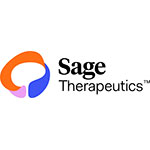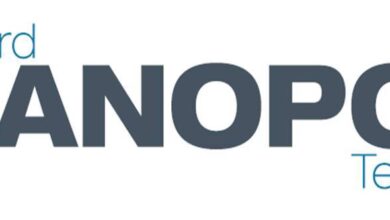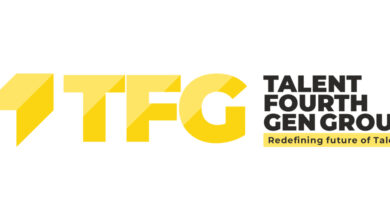Sage Therapeutics Announces Continued Positive Zuranolone Data for Both 30 mg and 50 mg Doses in Open-Label SHORELINE Study in Patients with MDD

In the now completed 30 mg zuranolone cohort, approximately 70% of participants with positive response to an initial 2-week treatment required at most one additional zuranolone treatment during the 12-month study
After the initial 2-week zuranolone treatment, more than 70% of patients who received 30 mg and 80% of patients who received 50 mg achieved positive response at Day 15
In both 30 mg and 50 mg cohorts, zuranolone was generally well-tolerated with an adverse event profile consistent with data reported earlier
CAMBRIDGE, Mass.–(BUSINESS WIRE)–Sage Therapeutics, Inc. (Nasdaq: SAGE) today reported complete 12-month data from the 30 mg cohort and interim data from the 50 mg cohort of the ongoing Phase 3 open-label SHORELINE Study. This clinical study was designed to naturalistically follow patients with major depressive disorder (MDD) and evaluate the safety and tolerability of zuranolone 30 mg and 50 mg in adults for up to one year. For the primary endpoint of safety and tolerability, the data analyzed to date show that zuranolone was generally well-tolerated in both the 30 mg and 50 mg dose cohorts. Adverse events reported in the trial during the period analyzed were generally consistent with results seen in previous zuranolone clinical trials.
Secondary endpoints included response and remission as evaluated by the 17-item Hamilton Rating Scale for Depression (HAMD-17) and the number of times a patient received retreatment. Patients with a clinical response (decrease in HAMD-17 baseline score of ≥50%) to the initial 14-day course of zuranolone 30 mg required a mean of 2.2 treatments in the 12-month study. As the first naturalistic, longitudinal, clinical development trial conducted in MDD, the SHORELINE Study provides real-world insight into the potential use of zuranolone, if successfully developed and approved, as an as-needed treatment for MDD, and builds on the data assembled in the LANDSCAPE clinical program to date. The Company plans to report additional data from patients in the 50 mg dose cohort in late 2021. Additionally, the Company plans to present additional data from the SHORELINE Study at medical and scientific conferences and in peer-reviewed journal articles.
“Sage embarked on the LANDSCAPE clinical program to evaluate the safety and efficacy of zuranolone with the ambition of reimagining the treatment for depression with the goal of a rapid-acting, durable, treat-as-needed option in a disease where innovation is lacking and the incidence rate has unfortunately increased exponentially in the last 20 years,” said Barry Greene, Chief Executive Officer at Sage Therapeutics. “Today we are announcing additional positive data from the SHORELINE Study that demonstrate continued strong results from the 30 mg dose and strengthens our confidence in the potential of the 50 mg dose. Designed as a naturalistic study, these data approximate real-world evidence of use of zuranolone at 30 mg and 50 mg doses. We look forward to the results of the WATERFALL and CORAL Phase 3 pivotal data readouts in MDD this year.”
Zuranolone 30 mg: Summary of Complete 12-Month Results from SHORELINE Study
The Phase 3 SHORELINE Study is evaluating the safety and tolerability of zuranolone 30 mg and 50 mg in adults 18-75 who have MDD with a baseline HAMD-17 total score ≥20.
- 725 people with MDD (HAM-D ≥20 and Montgomery Asberg Depression Rating Scale (MADRS) ≥28) were treated with a first dose of zuranolone 30 mg once nightly for 14 days.
- The mean baseline HAM-D score (± SD) at entry into the study was 25.3 ± 4.1 (n=725).
- 173 (23.9%) did not achieve response to the first course and exited the study. Subjects were required by protocol to achieve response to continue into the naturalistic follow-up period.
- At Day 15, the mean change from baseline was -15.2 ± 7.1 (n=687); 505 (73.5%) patients achieved response and 276 (40.2%) achieved remission (HAM-D ≤7).
- 304 (42%) patients were on pre-existing antidepressant therapy (ADT) which was continued, while 421 (58%) were on no ADT; there were no meaningful differences in efficacy outcomes between the two groups.
Safety and tolerability of initial treatment:
- In the first course of treatment (n=725), the adverse events reported were similar in nature and frequency to those previously reported for completed zuranolone studies, with 368 (51%) patients reporting at least one adverse event.
- The most common treatment emergent adverse events (TEAEs) (reported ≥5%) were somnolence (86; 11.9%), headache (103; 14.2%), and dizziness (54; 7.4%). Most adverse events were mild or moderate.
- Similar adverse events were reported regardless of the presence or absence of ADT.
- Causes of adverse event-related discontinuations during the 14-day course of treatment were varied. The overall rate of study drug discontinuation due to TEAEs was 2.6%.
- No events of loss of consciousness were reported at any time during the study.
Retreatment:
489 patients were responders to initial 30 mg treatment and continued in the study beyond the first treatment course.
- Of the 489 patients continuing in the study, 210 (42.9%) patients used only the single initial zuranolone course, while 125 (25.6%) used a total of two courses, 58 (11.9%) used a total of three courses, 53 (10.8%) used a total of four courses, and 43 (8.8%) used a total of five courses.
- The number of zuranolone retreatments used were similar regardless of the presence or absence of ADT.
- The overall incidence rates of TEAEs during the second, third, fourth, and fifth treatment courses were, 42% (120/286), 28.6% (45/157), 29% (28/96), and 27.9% (12/43), respectively. The incidence of TEAEs in the first treatment course was 51% (368/725). The TEAEs were observed to decrease in frequency through the first three courses and remained stable over the next two courses.
- Safety on treatment, off-treatment, and in between treatments has shown a consistent pattern to date, in AE presentation across treatment courses.
- No signal on suicidality was identified during or in between treatment courses.
- Outcomes on efficacy measures and safety events were similar to those observed in the initial treatment course; and the presence or absence of ADT did not change the results.
Zuranolone 50 mg Dosing Cohort Initial Treatment Course:
Since May 2020, all newly enrolled patients in the SHORELINE Study received zuranolone 50 mg.
- In the 199 patients who received zuranolone 50 mg only (n=199), the mean HAM-D baseline score was 25.1 ± 3.3.
- At Day 15 of the initial treatment course in this group, the mean HAM-D change from baseline was -16 ± 6.0; 149/185 (80.5%) achieved response and 80/185 (43.2%) achieved remission.
- In this cohort the adverse event profile was similar to that seen in patients who received 30 mg zuranolone, with 62.8% (125/199) subjects reporting at least one AE. Events >5% of somnolence, dizziness, and sedation were observed to be more frequent in the 50 mg cohort, but were similar in severity to the events seen with 30 mg. Most adverse events were mild or moderate.
- The 50 mg cohort completed course one and is due for completion of the full 12-month follow-up in late 2021.
About the SHORELINE Study
The SHORELINE Study (217-MDD-303) is a Phase 3, open-label, 1-year longitudinal study evaluating the safety, tolerability, and need for repeat dosing with zuranolone in adults with MDD. The study comprises two cohorts, one with zuranolone 30 mg as a starting dose and one with zuranolone 50 mg as a starting dose both administered once nightly for 14 days. The need for repeated dosing is assessed every 14 days based on the results of a patient-reported PHQ-9 (≥10) and HAMD-17 (≥20) assessment. There was a minimum of 56 days between zuranolone 14-day courses, to allow for a maximum of five treatments for the 12-month study period.
About Major Depressive Disorder
Major depressive disorder (MDD) is a common but serious mood disorder in which people experience depressive symptoms that impair their social, occupational, educational or other important functioning, such as a depressed mood or loss of interest or pleasure in daily activities, consistently for at least a two-week period. It is estimated that approximately 17 million people in the U.S. suffer from MDD each year. While antidepressants are widely used to treat MDD, large-scale studies have demonstrated the need for additional therapies.
About Zuranolone
Zuranolone (SAGE-217) is a once-daily, two-week therapy in development for the treatment of major depressive disorder (MDD) and postpartum depression (PPD). Zuranolone is an investigational oral neuroactive steroid (NAS) GABAA receptor positive allosteric modulator (PAM). The GABA system is the major inhibitory signaling pathway of the brain and central nervous system and contributes significantly to regulating brain function.
We are jointly developing zuranolone in the U.S. with Biogen under a Collaboration and License Agreement that became effective in December 2020, and will jointly commercialize zuranolone with Biogen in the U.S. if our development efforts are successful and it is approved in the U.S. We have granted Biogen sole rights to develop and commercialize zuranolone outside the U.S., other than in Japan, South Korea and Taiwan where we have granted rights to Shionogi.
Zuranolone has been granted Breakthrough Therapy Designation by the U.S. Food & Drug Administration.
About Sage Therapeutics
Sage Therapeutics is a biopharmaceutical company committed to developing novel therapies with the potential to transform the lives of people with debilitating disorders of the brain. We are pursuing new pathways with the goal of improving brain health, and our depression, neurology and neuropsychiatry franchise programs aim to change how brain disorders are thought about and treated. Our mission is to make medicines that matter so people can get better, sooner. For more information, please visit www.sagerx.com.
Forward-Looking Statements
Various statements in this release concern Sage’s future expectations, plans and prospects, including without limitation statements regarding: our belief and confidence in the potential profile and benefit of zuranolone and in future results; the potential for successful development and approval of zuranolone; our planned timing for reporting of data from ongoing clinical trials; our estimates as to the number of patients with MDD; and the goals, opportunity and potential for zuranolone and for our business. These statements constitute forward-looking statements as that term is defined in the Private Securities Litigation Reform Act of 1995. These forward-looking statements are neither promises nor guarantees of future performance, and are subject to a variety of risks and uncertainties, many of which are beyond our control, which could cause actual results to differ materially from those contemplated in these forward-looking statements, including the risks that: results from interim data cuts from a clinical study may not be reflective of the results that will be achieved in the full study once completed; success in earlier clinical trials may not be repeated or observed in ongoing or future studies, and ongoing and future non-clinical and clinical results may not meet their primary or key secondary endpoints or be sufficient to file for or gain regulatory approval to market a product without further development work or may not support further development at all; we may encounter adverse results or adverse events at any stage of development that negatively impact further development or that require additional nonclinical and clinical work which may not yield positive results; we may encounter different or more severe adverse events at the higher dose of zuranolone we are studying in our ongoing trials; we may encounter issues with the efficacy or durability of short-term treatment, or co-initiated treatment with zuranolone or safety and efficacy concerns with respect to retreatment that require additional studies be conducted; we may encounter delays in conduct of our clinical trials, including slower than expected site initiation or enrollment, that may impact our ability to meet our expected time-lines; the FDA may ultimately decide that the design or results of our completed and planned clinical trials for zuranolone, even if positive, are not sufficient for regulatory approval in the indications that are the focus of our development plan; other decisions or actions of the FDA or other regulatory agencies may affect the initiation, timing, design, size, progress and cost of clinical trials and our ability to proceed with further development; the actual size of the MDD patient population may be significantly lower than our estimates and, even if zuranolone is approved, it will only be approved or used to treat a subset of the relevant patient populations; we may encounter technical and other unexpected hurdles in the development and manufacture of zuranolone or our other product candidates which may delay our timing or change our plans; as well as those risks more fully discussed in the section entitled “Risk Factors” in our most recent Annual Report on Form 10-K, as well as discussions of potential risks, uncertainties, and other important factors in our subsequent filings with the Securities and Exchange Commission. In addition, any forward-looking statements represent our views only as of today, and should not be relied upon as representing our views as of any subsequent date. We explicitly disclaim any obligation to update any forward-looking statements.
Contacts
Investor:
Jeff Boyle, 617-949-4256
[email protected]
Media:
Maureen L. Suda, 617-949-4289
[email protected]




